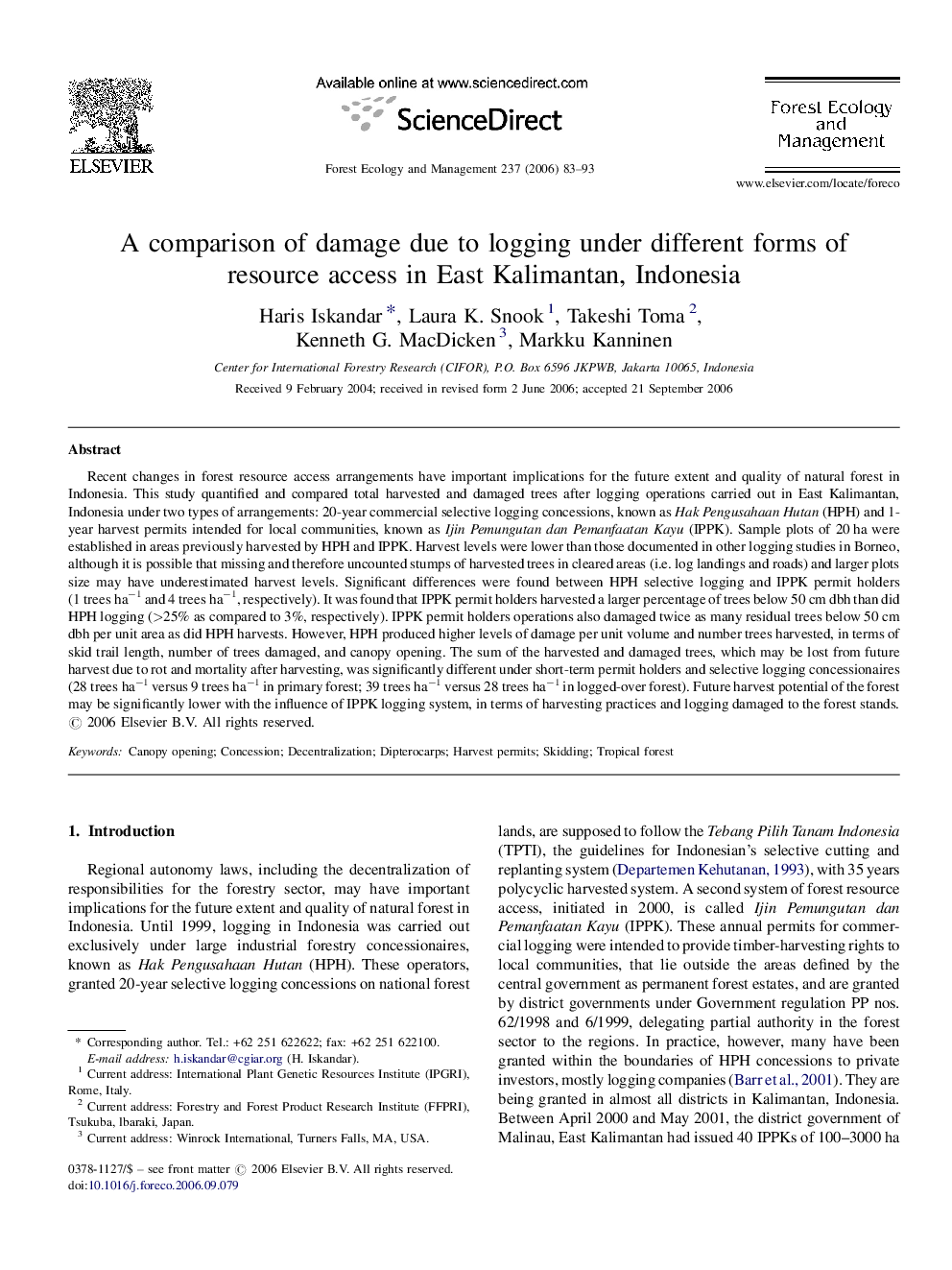| Article ID | Journal | Published Year | Pages | File Type |
|---|---|---|---|---|
| 89938 | Forest Ecology and Management | 2006 | 11 Pages |
Recent changes in forest resource access arrangements have important implications for the future extent and quality of natural forest in Indonesia. This study quantified and compared total harvested and damaged trees after logging operations carried out in East Kalimantan, Indonesia under two types of arrangements: 20-year commercial selective logging concessions, known as Hak Pengusahaan Hutan (HPH) and 1-year harvest permits intended for local communities, known as Ijin Pemungutan dan Pemanfaatan Kayu (IPPK). Sample plots of 20 ha were established in areas previously harvested by HPH and IPPK. Harvest levels were lower than those documented in other logging studies in Borneo, although it is possible that missing and therefore uncounted stumps of harvested trees in cleared areas (i.e. log landings and roads) and larger plots size may have underestimated harvest levels. Significant differences were found between HPH selective logging and IPPK permit holders (1 trees ha−1 and 4 trees ha−1, respectively). It was found that IPPK permit holders harvested a larger percentage of trees below 50 cm dbh than did HPH logging (>25% as compared to 3%, respectively). IPPK permit holders operations also damaged twice as many residual trees below 50 cm dbh per unit area as did HPH harvests. However, HPH produced higher levels of damage per unit volume and number trees harvested, in terms of skid trail length, number of trees damaged, and canopy opening. The sum of the harvested and damaged trees, which may be lost from future harvest due to rot and mortality after harvesting, was significantly different under short-term permit holders and selective logging concessionaires (28 trees ha−1 versus 9 trees ha−1 in primary forest; 39 trees ha−1 versus 28 trees ha−1 in logged-over forest). Future harvest potential of the forest may be significantly lower with the influence of IPPK logging system, in terms of harvesting practices and logging damaged to the forest stands.
